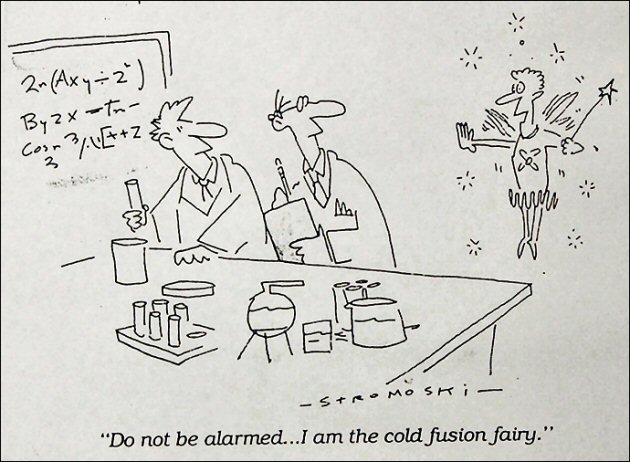More Errors By Storms Published in Naturwissenschaften
Nov. 5, 2013 – By Steven B. Krivit –
On Oct. 30, Naturwissenschaften published LENR researcher Edmund Storms’ reply to my comment. In my comment, I corrected two significant errors in Storms’ review of low-energy nuclear reaction research published in Naturwissenschaften in 2010. His Oct. 30 reply contains additional errors.
On April 10, 2013, I found errors in Storm’s 2010 review, and I submitted a comment to Sven Thatje, the editor-in-chief of Naturwissenschaften, for peer review. My comment published online on Aug. 15, 2013. Three days later, I summarized Storms’ errors in the New Energy Times article “Naturwissenschaften Publishes Krivit’s Critique of Storms’ LENR Review.”
Storms’ Oct. 30 reply offers no facts that invalidate my comment. However, in his reply, Storms published new factual errors on which he bases his claim of the erroneous concept of cold fusion.
Storms wrote, “Over 16 independent studies using numerous samples found that helium was present when energy production was detected, and some measurements found no helium when no extra energy was detected. Three independent studies measured the energy/He ratio, which can be summarized as 25±5 MeV/He.”
Storms’ statement is incorrect for two reasons.
First, it fails on logic. Storms tries to make a quantitative comparison between heat measured from LENR experiments and atoms of helium-4 produced in those experiments. The mathematical assertion is 24 (or 25) MeV heat per each 4-He atom. In proposing such a ratio, Storms, as well as many of his peers who continue to promote cold fusion, asserts that LENRs emulate the third branch of thermonuclear fusion and therefore validate his assertion that LENRs are some kind of “cold fusion.”
The first error in Storm’s reply is that he does not know the true denominator in the equation (24 MeV/4-He) because the researchers who have measured the excess heat and helium-4 never performed a full assay of other nuclear products and effects that could also make contributions to the measured excess heat.
Second, Storms’ statement fails on data. Even if the researchers had performed full assays, the value of 24 MeV/4-He is not representative of the entire body of published experimental measurements of excess heat per 4-He atom.
I performed a precise tally of the published data. Although proponents of cold fusion cite this 24 MeV number as an established fact, it is not. Here are the three most commonly cited sets of excess heat versus helium-4 measurements, in MeV:
SRI International: 31 (Case Experiment), 38.34, 34.45, 22.85 (M4 Experiment)
U.S. Navy – China Lake: 39, 25, 44, 88, 83, 52, 62
ENEA Frascati: 103, 88, 124, 103, 103
I first reported this tally on July 10, 2008, published in my editorial “Cold Fusion—The Value of Keeping an Open Mind.” I had hoped that the researchers in the field would keep an open mind when they saw that the 24 MeV number was unsupported by the published data. Unfortunately, very few researchers working in the field took notice.
My source references and data are shown in this linked document. Two years later, in 2010, I reported that Michael McKubre of SRI International had manipulated the data from experiment M4 and that therefore no meaningful conclusion could be drawn from the data I published (38.34, 34.45, 22.85), which was based on the data McKubre published.
Related Articles:
Discussing the 24 MeV Belief with Peter Hagelstein
The Cold Fusion Belief System
Investigation of Michael McKubre’s “M4” Experiment

Cold Fusion Fairy
Questions? Comments? Submit a Letter to the Editor.

